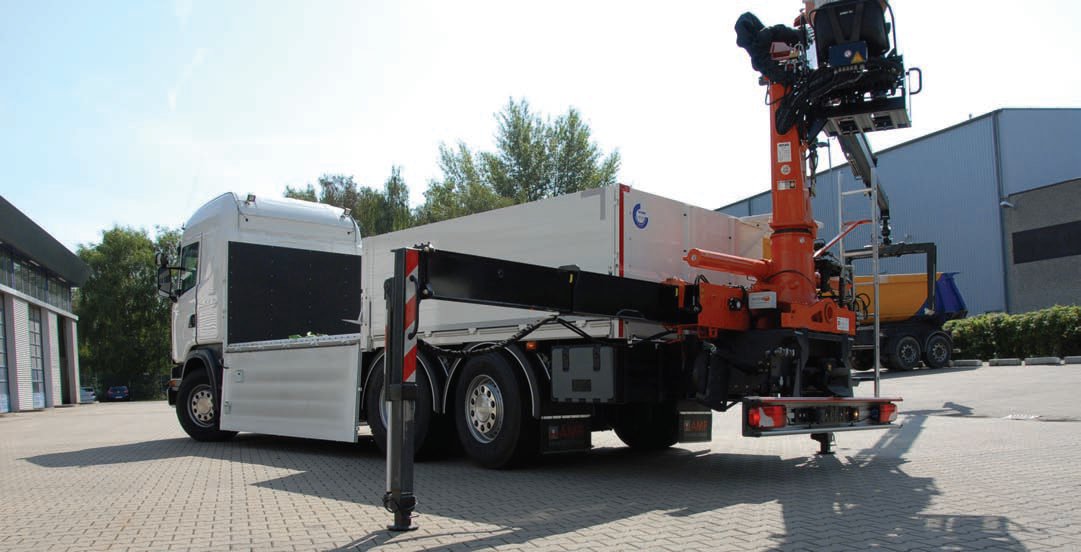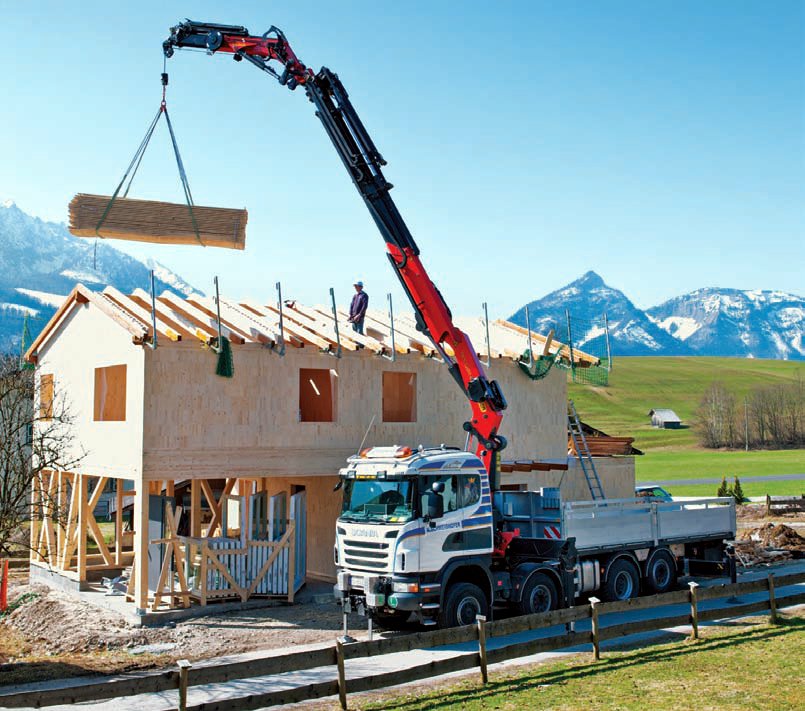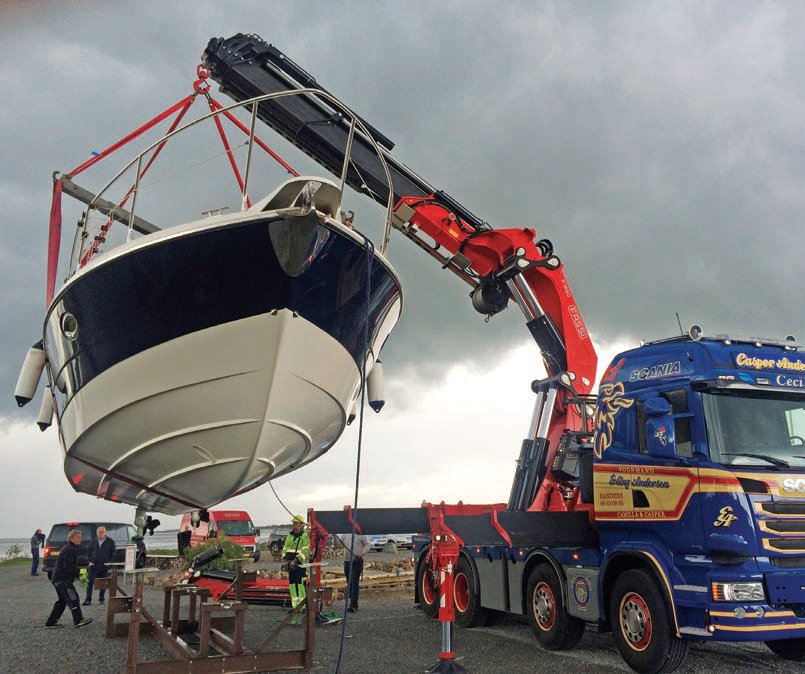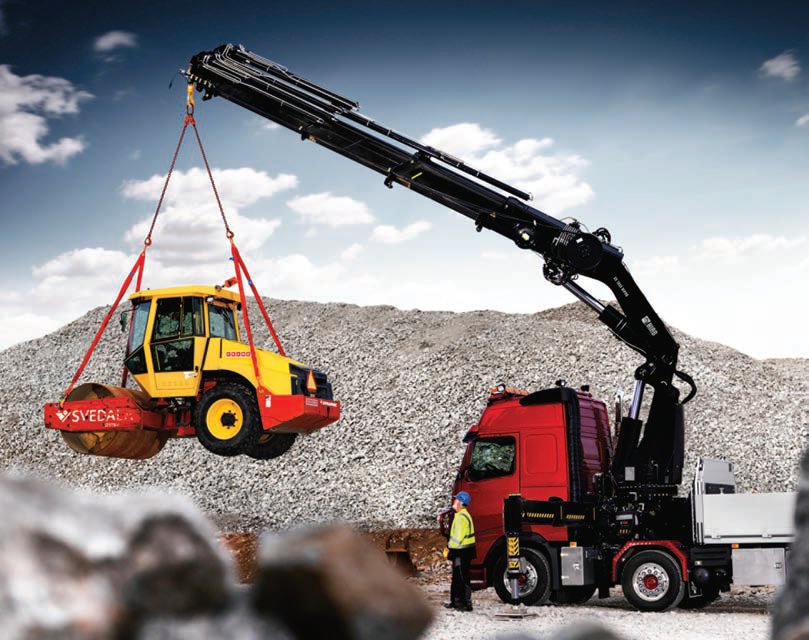Stable hands
27 May 2015Stability systems required to comply with revised EU standards, have been further developed to offer improved efficiency. Daniel Searle reports.
In 2010, the European product standard for truckmounted cranes, EN12999, was revised to require systems that monitor the stability function of the vehicle, based on broad principles laid out in the Machinery Directive. As manufacturers worked to comply with the revision, they developed new technologies that go beyond the core requirements and improve the overall performance of knucklebooms.
While the standards are set across the EU, defining an end result, manufacturers are free to develop their own ways of implementing them.
"Palfinger's main stability control system is the HPSC, which was launched four years ago and is available on almost all of Palfinger's cranes," says Lukas Peter, product marketing manager for loader cranes, EMEA, at Palfinger.
"It features sensors on the outriggers, to determine how far out each outrigger is. It gives the operator the maximum in outreach and lifting capacity, while meeting the demands of the EN12999 regulation."
The HPSC calculates the working range for any combination of the slewing angle of the boom system and positioning of the stabilizers -- using an algorithm developed by the crane manufacturer -- and is incorporated into the crane's electronic safety system. The stability of the crane is recalculated in real-time when any alteration is made.
As well as improving safety, the system ensures that the operator has access to the largest possible working range of angles and loads.
"The system is better-suited to larger cranes, and we are currently working on adding it to the 280 model crane," says Peter.
"The response from our customers has been mainly positive -- the only aspect customers _ nd frustrating is the limitations caused by the regulations. But working within these legal regulations, the HPSC system provides the optimum possible performance."
Hiab, meanwhile, is developing the iLoad system, which maintains stability as one benefit of monitoring and controlling the whole knuckleboom jib.
Rafal Sornek, head of research and development at Hiab, says: "The iLoad system does not just control stability, it also controls the whole jib -- not individual cylinders or actuators, but the whole jib like a robotic arm.
"The benefits of this include making the crane easier to operate for less-experienced operators, such as those in the military or fire services.
"It also provides automatic folding and unfolding, more precise information on where the tip of the crane is, and it can boost capacity -- the iLoad automatically optimises the position of the jib to provide the maximum capacity at each specific point. This can increase the capacity of the crane without increasing the truck load.
"The iLoad is also compatible with Hiab's VSL+ system, which measures the loading of the truck and calculates by much how the load has extended the outreach of the crane. The heavier the load on the truck, the more stable the crane, and the VSL+ system automatically calculates the effect this has.
"Combining the iLoad and VSL+ provides doubled benefits in terms of extended reach and capacity.
"The VSL+ is currently available on the Hiab 858 and 1058 cranes.
"The iLoad project is proceeding very well. We have demonstration cranes running with it at our laboratory, and the product development project started this year. We are aiming to potentially launch it in 2016."
Operator friendliness is an area where Palfinger has also focused its attention, and particularly on folding and unfolding the crane.
"We recently introduced the P-Fold system for our knuckleboom cranes, which is a semi-automatic system for folding and unfolding the arm from the crane," says Peter.
"This reduces set-up time, and is useful for both less-experienced and experienced operators.
"The P-Fold has been available on our SH cranes since January." American standards In North America, crane manufacturer Iowa Mold Tooling (IMT) follows a regional counterpart to the EN12999 regulation in Europe, says John Field, product manager of material handling.
"IMT articulating cranes are designed, constructed and tested to the American National Standards Institute (ANSI) B30.22/American Society of Mechanical Engineers (ASME) standard for articulating boom cranes. B30.22 applies to the construction, installation, operation, inspection and maintenance of articulating cranes.
"Last revised in 2010, the B30.22 standard requires that truck and crane combinations are tested to ensure stability in accordance with Society of Automotive Engineers (SAE) J765a, Crane Stability Test Code. Cranes are tested for stability to 85% of 'tipping' based on the balance point for a specific truck and crane combination.
"IMT offers the option of an electronic vehicle stability (EVS) system, which monitors and secures the stability of the vehicle during crane operation. Generally the crane's maximum load moment cannot be utilised in the entire working area due to lacking stability of the vehicle. The EVS system helps increase productivity as it decreases the risk of vehicle instability and enables the operator to utilise the full capacity of the crane.
"As the load is manipulated, the EVS system ensures that the crane is within level tolerance right up to its stability threshold, meaning that the vehicle's stability is maximized throughout the entire rotation area of the crane. On the job site, that means positioning a load in an effective and safe manner.
"The EVS system complements the standard rated capacity limiter (RCL) system, which is the crane's overload system, creating a comprehensive communication and control system that keeps the crane operator informed of the interaction of load positioning and vehicle stability."
Atlas recently launched its Atlas/ Ahmeko stability control system, which takes a different approach again to monitoring loader crane trucks. Four ultrasonic sensors, mounted to the axles of the truck, continuously measure the horizontal distance to the ground. When one wheel is detected to have moved upwards, the loader crane is automatically stopped.
The advantage of this approach, says Atlas, is that the load on the vehicle and any counterweights are accounted for, while the relatively small amount of equipment reduces the risk of breakdowns.
The system meets the latest machine regulations for loader cranes and is retrofittable to almost all trucks.
Alongside the development of its FX900 electronic system, Italian manufacturer Fassi also introduced its FSC/SII stability control system. Based on its existing S version of the system, it uses the capability of the FX900 to improve performance -- and is soon due to be compatible with all electronic devices.
New features include an improved digital tilting sensor, which provides a much faster dynamic response via internal accelerometers and gyroscopes, and a dynamic control algorithm added to the system's software.
The tilting sensor helps to optimise the crane performance on sites where space restrictions prevent the outriggers from being fully extended, and offers 50% more working area compared to the previous FSC/S system.
The FSC/SII distinguishes between the left and right work areas on the sides of the truck, enabling it to account for operating on an incline by controlling the speed at which the load is handled, and derating the crane performance, under different combinations of incline and stabilisation.
By checking the tilting angle of the crane base, the system provides a double check of stability as it also verifies the position of the outrigger lateral extension supports.
Further developments Outside of stability systems, manufacturers have introduced a range of new cranes and features in the knuckleboom sector, focusing on efficiency and beyond.
"Hiab has developed the ePTO crane, launched at the IAA show in Germany at the end of 2014," says Sornek. "It enables the crane to be operated without the engine running, reducing noise and emissions.
"Also recently introduced is the S-HiPro 130, a knuckleboom crane with automatic folding. The fold position is lying flat on the compactor, which results in the compactor not losing any capacity -- compared to a conventional crane where it can lose 25% of its capacity due to the positioning of the arm."
"Bigger knuckleboom cranes are becoming increasingly popular," says Peter at Palfinger. "This is particularly so in central Europe where customers are using the cranes for a variety of purposes, due to the cranes' flexibility and versatility.
"The trend for the market is an increasing focus on operator friendliness, safety and efficiency.
Current development trends include improving operator friendliness, with innovations such as Palfinger's SRC (synchronised rope control) system.
This regulates the rope winch, enabling the operator to concentrate on the load rather than having to monitor the rope as well."
IMT has introduced its 32/222 articulating crane, a 32tm model in a series which covers 2.5-80tm.
"The 32/222 crane is designed for superior operator productivity with unique lift and reach capabilities requested by customers," says Field.
"The excellent strength and reach of the IMT 32 tm crane, along with high working speed and precision control, maximize operator efficiency. It is rated at 222,050 foot-pounds and features a maximum lifting capacity of 15,058lb (6,830kg) at a radius of 4.5m. The crane offers one of the industry's longest horizontal reaches in the 30tm range: 21.2m with eight hydraulic extensions.
"Productivity is improved by features such as the dual-power plus link-arm system, 15º overbending, continuous rotation and a standard radio remote control."
The knuckleboom sector in the US is currently expanding, while the market in Europe is less certain. "IMT primarily serves North America and South America with articulating cranes, but our cranes are available in other global markets," says Field.
Sornek at Hiab says: "In the US, we're seeing strong demand for IMT articulating cranes from the construction and building supply markets. We also continue to experience solid demand from the railroad and utility segments. In 2015 we expect growth to continue in the US, and to remain flat to moderate in Europe."
"Loader cranes are still an important part of Palfinger's business," says Peter. "In summer 2014 demand declined significantly in the European markets.
Recovery began in late October, and in January and February the crane business gained strong momentum again. Since March Palfinger has observed some volatile trends in Europe and the management expects a stable development at the current level. The worldwide Palfinger Group expects revenue growth of approximately 10% in 2015.



